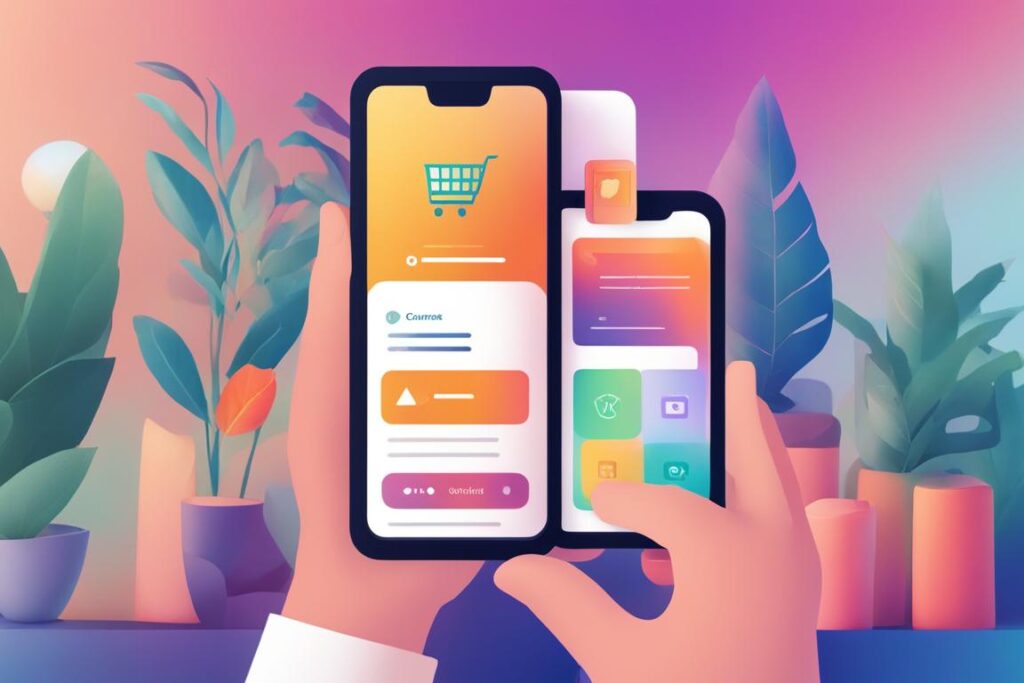Customer onboarding process is more than just a simple act of welcoming new customers onboard, it’s a strategic process aimed at helping customers feel comfortable with your product, and ultimately fostering their loyalty. The onboarding process begins from the moment a customer expresses interest in your product and extends well beyond their first purchase.
The customer journey is crucial to the overall customer experience, and a well-optimized onboarding process can transform an average experience into a great one. In this section, we will explore the importance of optimizing your customer onboarding process in Romania’s market and how it impacts your customer journey and overall experience.
Key Takeaways
- The customer onboarding process is a strategic process aimed at helping customers feel comfortable with your product.
- A well-optimized onboarding process can enhance the overall customer experience.
- The onboarding process begins from the moment a customer shows interest in your product and extends beyond their first purchase.
- The customer journey greatly impacts the overall customer experience.
- Optimizing your customer onboarding process can lead to enhanced customer loyalty and retention in Romania’s market.
Understanding the Customer Onboarding Process
The onboarding process is a critical aspect of customer experience, as it sets the tone for the rest of the customer journey. It is a series of steps taken to help new customers understand how to use a product or service effectively. Without a proper onboarding process in place, customers may become frustrated or confused, leading to a negative perception of your brand.
In order to create an effective onboarding process, it is important to follow key best practices. These include identifying the most important steps for new customers, providing clear and concise instructions, and offering support and guidance throughout the process.
The onboarding process should begin with an assessment of the customer’s needs and goals. This information can help you tailor your onboarding approach to meet their unique needs. From there, you can identify the key steps involved in using your product or service, and provide clear instructions for each step.
It’s important to remember that the onboarding process is not a one-time event, but rather an ongoing process. As such, it’s important to regularly evaluate and refine your onboarding process to ensure it remains effective over time. By following these best practices and staying committed to constant improvement, you can create a seamless onboarding experience that sets your customers up for success.
Creating a Seamless Onboarding Experience
As a company in Romania, it’s essential to create a seamless onboarding experience for your new customers. A smooth onboarding process can lead to increased customer satisfaction and long-term loyalty.
One of the best practices for creating a seamless onboarding experience is to personalize the process according to the customer’s unique needs. By understanding their pain points and preferences, you can provide a tailored experience that meets their expectations.
Another strategy is to streamline the user onboarding process as much as possible by eliminating any unnecessary steps. This can be achieved through the use of clear instructions, easy-to-use interfaces, and informative tooltips.

Additionally, providing new customers with onboarding resources such as video tutorials, FAQ pages, and community forums can enhance their understanding of your product and increase their confidence in using it effectively.
Key Takeaways:
- Create a personalized onboarding experience for new customers
- Streamline the user onboarding process by eliminating unnecessary steps
- Provide resources to enhance customer understanding and confidence
By implementing these onboarding best practices, you can create a positive and memorable experience for your new customers in Romania. In the next section, we will discuss how personalization can further enhance the onboarding journey.
Personalizing the Onboarding Journey
Personalization is crucial in providing a positive customer experience and should be an integral part of the onboarding process. Customizing the onboarding journey to suit each customer’s unique needs and preferences can greatly enhance their satisfaction and overall customer experience.
One effective strategy to achieve personalization is to collect customer data during the onboarding process, such as their interests, goals, and pain points. This information can then be used to tailor the onboarding experience to match the customer’s individual needs.
Another way to personalize the onboarding journey is to offer self-service options that enable customers to choose their own path and progress at their own pace. This approach empowers customers to take control of their onboarding experience and can result in higher satisfaction rates.
Implementing personalized gestures and touches such as a welcome message, hand-written note, or customized offers based on their interests can go a long way in making the customer feel valued and appreciated. By catering to the unique needs of each customer, you can create a seamless and memorable onboarding experience that leads to improved customer satisfaction and retention.
By personalizing the onboarding journey to meet the unique needs and preferences of each customer, you can enhance the overall customer experience and create long-lasting relationships with your clientele.
Implementing Effective Onboarding Tools and Resources
When it comes to the customer onboarding process, having the right tools and resources in place can make all the difference. By streamlining and optimizing your onboarding efforts, you can create a better customer experience and set the stage for long-term success. Here are some of the best onboarding best practices to help you get started:
1. Automated Onboarding Software
Investing in automated onboarding software can revolutionize your onboarding process. With features like customizable templates, automated emails, and progress tracking, these tools can help streamline the process and reduce the workload for your team. Plus, automation can ensure that new customers receive a seamless onboarding experience every time.
2. Interactive Welcome Kits
One way to make your onboarding process more engaging is to create interactive welcome kits. These kits can include a variety of resources like video tutorials, step-by-step guides, FAQs, and more. By providing information in a visually appealing and interactive format, you can increase engagement and improve the overall onboarding experience.
3. Customer Support and Feedback
Another key aspect of a successful onboarding process is providing ongoing customer support. Having a customer support team available to answer questions and provide guidance can help alleviate concerns and ensure new customers feel supported. Additionally, soliciting feedback during and after the onboarding process can help you identify areas for improvement and enhance the overall customer experience.
By implementing these and other customer onboarding best practices, you can optimize your onboarding process and create a better customer experience from start to finish.
Measuring and Tracking Onboarding Success
Measuring and tracking the success of your customer onboarding process is crucial for ongoing improvement. By keeping track of key metrics and evaluating the effectiveness of your onboarding efforts, you can identify areas for improvement and optimize the customer journey.
One important metric to track is customer satisfaction. Using tools like customer surveys or feedback forms, you can gauge how satisfied customers are with their onboarding experience and use this information to make necessary changes.
Evaluating Customer Experience
Another way to measure onboarding success is to evaluate the overall customer experience. This can include metrics such as time to completion, the number of interactions required to complete onboarding, or the percentage of customers who complete the entire process.
Additionally, it’s important to track customer engagement metrics both during and after the onboarding process. This can include metrics such as app or website usage, time spent on the platform, or the frequency of visits.
Using Analytics Tools
To track these metrics effectively, it’s important to use analytics tools that provide meaningful insights. Google Analytics and Mixpanel are popular options for tracking customer behavior and engagement on a website or app.
Other metrics to consider tracking include churn rate, conversion rate, and the cost of acquiring a new customer. By tracking these metrics and regularly assessing their changes, you can optimize your onboarding process over time.
Addressing Common Onboarding Challenges
While effective onboarding is crucial, challenges can still arise during the process. To overcome these challenges, it’s important to have a well-planned and proactive approach in place. Here are some common onboarding challenges and strategies for addressing them:
1. Time Constraints
With busy schedules, new customers may find it challenging to complete the initial onboarding process in a timely manner. To address this challenge, consider breaking down the process into smaller modules and allowing customers to complete them at their own pace. Providing clear instructions and deadlines can also help.

2. Technical Issues
Technical glitches can cause frustration and delay the onboarding process. To minimize technical issues, ensure that all tools and systems are up-to-date and user-friendly. Provide clear instructions and contact information for technical support in case of issues.
3. Information Overload
The onboarding process can quickly become overwhelming if too much information is provided at once. To prevent information overload, break down the process into smaller steps and provide only the most essential information at each stage. Interactive content, such as videos and quizzes, can also help break up the content and keep customers engaged.
4. Lack of Engagement
If new customers don’t feel engaged during the onboarding process, they may lose interest or abandon the process altogether. To boost engagement, personalize the experience as much as possible and provide opportunities for interactive feedback. Using multiple channels, such as email, social media, and in-app messaging, can also help keep customers engaged and interested.
By proactively addressing common onboarding challenges through effective strategies and tools, you can ensure a smoother and more successful onboarding process for your customers.
Enhancing Customer Experience Through Onboarding
The importance of providing a positive and memorable customer experience cannot be understated. One of the key opportunities for accomplishing this is through the customer onboarding process. Effective onboarding techniques can greatly enhance the overall customer experience.
One way to enhance the customer experience through onboarding is by personalizing the process. By tailoring the onboarding journey to the unique needs and preferences of each customer, you can create a more engaging and impactful experience. Utilizing customer data and feedback can help inform these personalization efforts.
Another way to improve customer experience is by providing resources and tools to help customers during the onboarding process. This can include things like detailed guides and tutorials, as well as responsive and personalized customer support.
It’s also important to ensure that the onboarding process is as clear and straightforward as possible. By avoiding confusion and reducing friction in the onboarding journey, you can create a more seamless and enjoyable experience for customers.
At the end of the day, the goal of onboarding should be to establish a positive and long-lasting relationship with customers. By prioritizing customer experience and satisfaction throughout the onboarding process, you can set your business up for success.
Personalization Tips for Enhancing Customer Experience during Onboarding:
- Customize onboarding based on customer preferences and needs
- Use customer data and feedback to inform personalization efforts
Tools and Resources for Enhancing Customer Experience during Onboarding:
- Detailed guides and tutorials
- Responsive and personalized customer support
Building Customer Retention through Onboarding
A successful onboarding process is not only crucial for creating a positive first experience with your brand but also for building long-term relationships with your customers. By ensuring your onboarding process is engaging, informative, and personalized, you can increase customer satisfaction and retention.
A key factor in retaining customers through onboarding is effectively addressing their needs and concerns. This can be achieved by incorporating feedback loops and offering various communication channels to support customers throughout their journey.
Another way to enhance customer retention is through providing continued value post-onboarding. Offering additional resources, personalized content, and exclusive promotions to customers can foster a sense of loyalty and encourage repeat business.

Overall, a well-executed onboarding process can significantly contribute to customer retention and satisfaction. By continuously improving and adapting your onboarding efforts to meet changing customer needs and expectations, you can build long-lasting relationships with your customers.
Constantly Evolving Your Onboarding Strategy
One of the critical elements of a successful onboarding process is the ability to continuously adapt and improve the strategy. With the customer journey and experience constantly evolving, it is essential to remain up-to-date with the latest onboarding best practices to meet changing customer needs and expectations.
Regularly reviewing and analyzing the effectiveness of your onboarding efforts can help identify areas that need improvement and highlight successful strategies that can be replicated. Consider gathering feedback from customers to gain valuable insights into their experience and identify pain points in the onboarding process.
Implementing new tools and resources to streamline the onboarding process can also be beneficial. For example, you can use tutorial videos or chatbots to provide customers with quick and easy access to information and support.
By constantly evolving your onboarding strategy, you can create an exceptional customer journey and experience that promotes customer satisfaction and retention.






